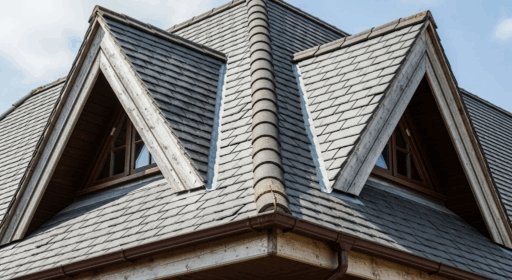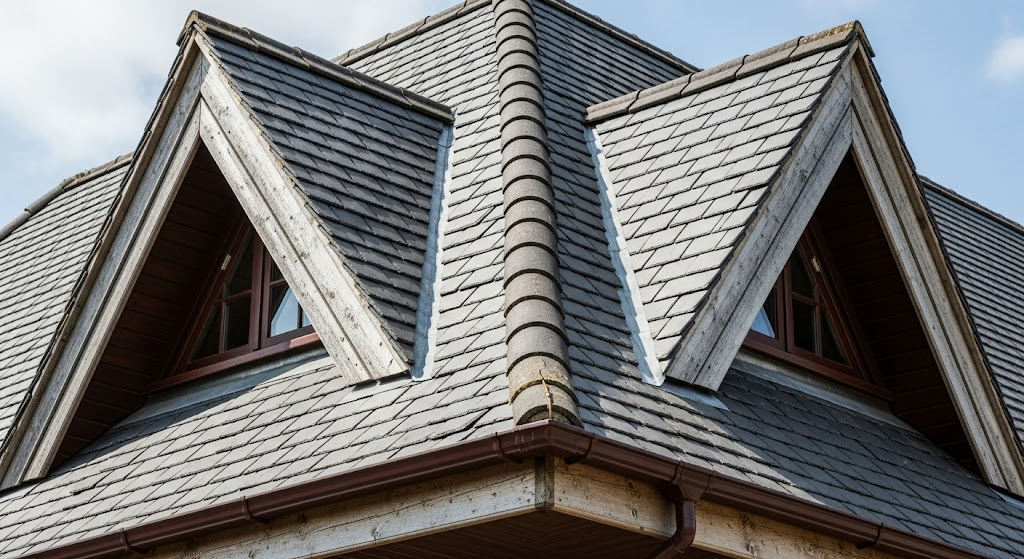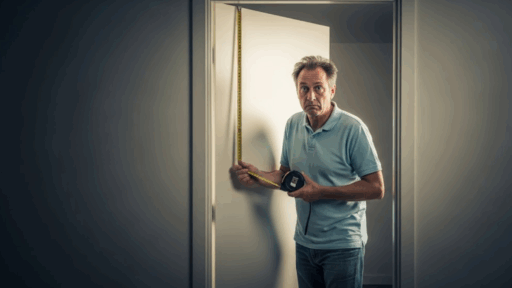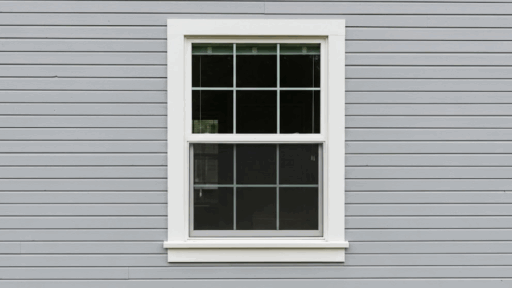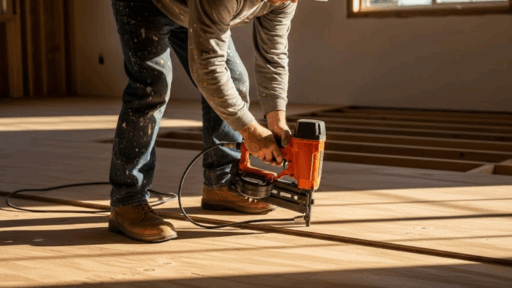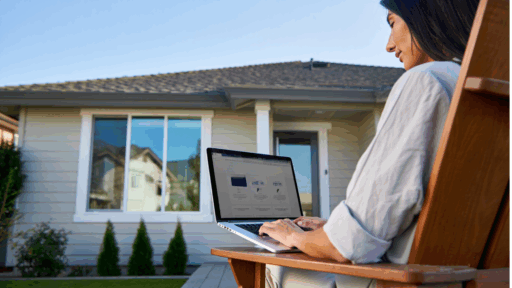Ever scratched your head when a roofer mentions “squares”? I sure did.
You’re thinking geometry class, right? Well, not quite! Roofing squares have nothing to do with those four-sided shapes we learned about in school.
When contractors talk squares, they’re speaking a different language. It’s like a secret code that makes perfect sense once you know the trick. But until then? You’re left wondering if your roof needs basic math lessons.
Let me break down what is a square in roofing for you. Because trust me, understanding roofing squares will save you from some seriously confusing conversations with contractors.
What is a Square in Roofing?
Thinking ” what is a square in roofing? ” as the construction world’s way of making big numbers manageable. Instead of saying “your roof needs 2,847 individual shingles,” contractors say “you need 15 squares.” Much easier on everyone’s brain, right?
A roofing square equals 100 square feet of roof area. That’s it. No complex math, no hidden meanings. A simple unit that makes estimating materials much easier.
Picture a 10-foot by 10-foot section of your roof. That’s precisely one square. Easy to visualize, easy to calculate, and easy to communicate with your roofing team.
This measurement system enables contractors to order the exact amount of materials needed. It prevents waste and ensures they don’t run short halfway through your project: innovative thinking from an industry that deals with massive surface areas on a daily basis.
Is Home Square the Same as Roof Square
Nope! And this confusion costs people money every single day.
Home square footage measures your interior living space, which is the area inside your walls where you live. Roof squares measure the surface area of your actual roof that needs to be covered.
Your roof is bigger than your house footprint because:
- Overhangs and eaves extend beyond your walls
- Roof pitch creates more surface area than flat footage
- Dormers and additions add extra roof sections
- Garages and porches count as roof area, not living space
Think about it this way: if you have a 2,000 square foot home, your roof might need 25-30 squares of shingles. That’s 2,500-3,000 square feet of roofing material.
The steeper your roof pitch, the bigger this difference gets. A steep roof can have 40% more surface area than the home’s footprint.
This is why contractors always measure your actual roof, not just look up your home’s square footage online. Those numbers won’t help them order the right amount of materials.
How Many Squares in a Roofing Bundle
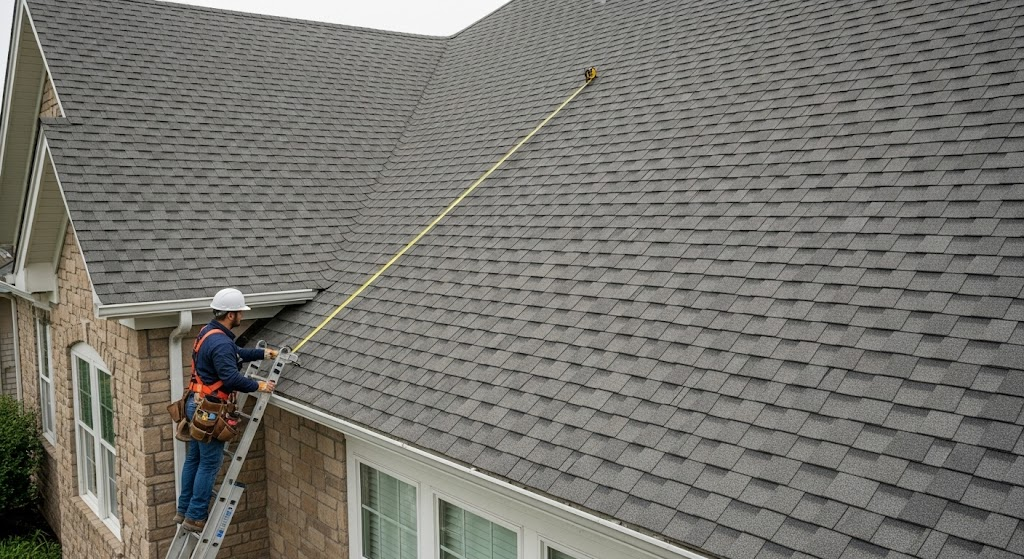
Roofing bundles contain different amounts depending on the material type. Standard asphalt shingles typically come with three bundles per square.
Most shingle bundles cover about 33.3 square feet. This means you need 3 bundles to make one complete square. Math made simple! No roofing square calculator is required.
Here’s the breakdown:
- 1 bundle = roughly 33.3 square feet
- 3 bundles = 1 square (100 square feet)
- Some premium shingles might need 4-5 bundles per square
- Always check the packaging for exact coverage
Different shingle types have different bundle requirements. Thicker, heavier shingles often need more bundles to complete a square. Use this breakdown as your personal roof square footage calculator.
Factors That Determine Square Roofing
Calculating roof squares isn’t just about length times width. Several factors can affect your measurements, and understanding these helps you avoid costly mistakes and material shortages.
1. Roof Pitch and Slope
Steeper roofs eat up more materials. A 45-degree slope needs about 40% more coverage than a flat surface. Those angles create extra square footage that your house measurements never show.
2. Roof Shape Complexity
Simple rectangular roofs are easy to measure. Multiple peaks, valleys, and dormers turn your roof into a puzzle that needs extra pieces. Each dormer and valley adds complexity and square footage.
3. Waste Factor Considerations
Plan for 10-15% extra material for regular waste from cuts and mistakes. Complex roofs require 20% more because intricate designs generate more waste. Better to have leftovers than stop mid-project.
4. Material Type Requirements
Different materials have different coverage rates. Standard shingles give three bundles per square, but tile and metal follow their own rules. Your underlayment must match your shingle choice.
How Do You Calculate the Cost
Roof cost calculations involve more than just material prices: smart homeowners factor in labor, permits, and unexpected expenses when budgeting for roofing projects.
| Cost Component | Price Range per Square | Notes |
|---|---|---|
| Asphalt Shingles | $100-$200 | Most common choice |
| Labor Installation | $150-$300 | Varies by region |
| Underlayment | $25-$50 | Essential protection layer |
| Permits & Inspections | $100-$500 | Total project cost |
| Waste Allowance | 10-15% of the total | Add to material costs |
| Removal of Old Roof | $50-$150 | If replacement needed |
Total project costs typically range from $400 to $800 per square foot for standard installations. Premium materials or complex roof designs push costs higher.
Concluding Thoughts
Roofing squares eliminate the guesswork from large projects. This simple measurement system enables contractors and homeowners to communicate effectively about materials and costs.
Remember the magic number: 100 square feet equals one square. With this knowledge, you can better understand estimates and avoid confusion during roofing discussions.
Your next contractor conversation about what is a square in roofing? just got much easier.

